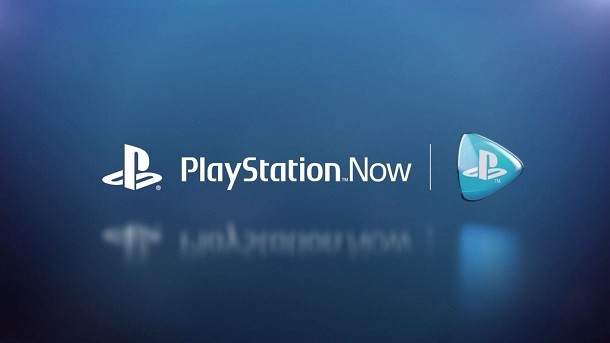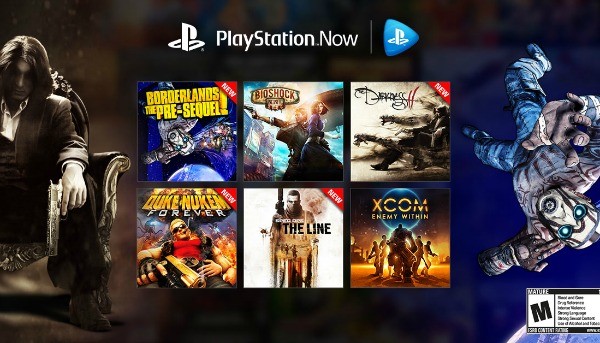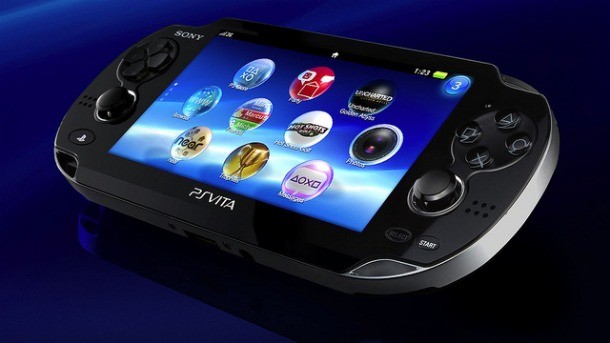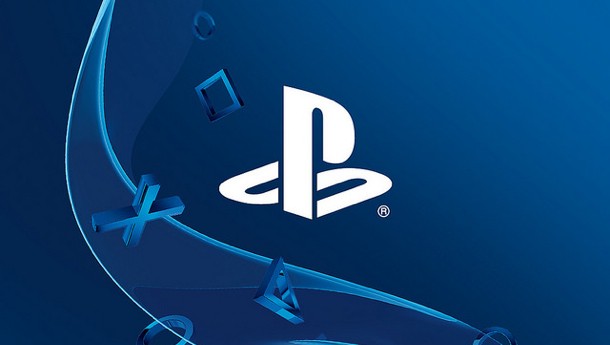Our extra-large special edition is here. Subscribe today and receive the 25% longer issue at no extra cost!
Should You Give PlayStation Now Another Shot?

PlayStation Now is a premium service that first released in 2015, allowing subscribers to stream over 100 PS3 games to a variety of devices. The product of Sony’s $380 million acquisition of cloud streaming company Gaikai, expectations were high that the service would help to bring cloud-based gaming into the mainstream. However, a number of factors, such as an unexpectedly high price point, minimal selection of games, and frequent internet connection issues, kept the service from truly breaking out. While the service still has stalwart defenders, it’s fair to say that interest has waned.
While the service may have been written off by many, a lot can happen in just a couple of years. We took a look at Now’s most common complaints at launch and whether or not the grievances have been addressed and improved. More than two years later, is PlayStation Now worth another shot?

Complaint: Small Game Selection
Then: There was a lot of talk of PlayStation Now being dead on arrival, but Sony never gave up on supporting their investment into the cloud gaming platform. It launched with only about 100 games, but titles were continually added to the service. For a while, they only brought in a handful of titles per month, but that number has actually grown over time, with some months adding a dozen or more titles. Still, nothing can match November 2015, when Sony added an unprecedented 105 games, including titans such as Street Fighter, Resident Evil, Earth Defense Force, and a slew of SNK classics including King of Fighters and Fatal Fury.
Now: The number of games on PlayStation Now has grown from 100 to well over 460, and Sony is showing no signs of reining in their continued support for the service. There are some big-shot PlayStation exclusives like Heavy Rain, inFamous, the first three Uncharted games, and the entire God of War catalog, in addition to multiplatform heavies like BioShock, Tomb Raider, Dead Island, and Saints Row. Beyond that, there are also a slew of cult favorites (Dead to Rights: Retribution, Red Faction: Guerilla), arcade classics (Q*bert Rebooted, Namco Museum Essentials, Frogger Returns), and even a bunch of stinkers, which are good for little more than a cheap laugh (Heavy Fire: Afghanistan, Alien Rage).
Verdict: PlayStation Now’s greatest asset in 2017 is the sheer quantity of quality titles available for the service. From blockbuster action titles to JRPGs, there is plenty here for every type of gamer.

Complaint: High Price
Then: At launch, the cost of a PlayStation Now subscription was pretty steep: $20 a month, or $45 for three months. All told, that’s between $180 and $240 for a year of the service. For that kind of money, you could buy four years of PlayStation Plus or Xbox Live Gold, or raid your local used-game store for dozens of the older titles that are available on PS Now.
Now: In the years since that disappointing price point was announced, the cost of PlayStation Now hasn’t changed. However, they did put the service on sale, temporarily offering a 12-month subscription for $100, or less than nine bucks per month. It’s a mystery why this deal isn’t always in place, since $100 is competitive with streaming giants like Amazon and Netflix, of which PlayStation Now is striving to be the video game equivalent. That sale has come and gone twice over the past two years, so while it’s safe to assume it may return to that price at some point, new users are unable to take advantage of it at the moment.
Verdict: If the $100 annual subscription were to be made a permanent fixture, PlayStation Now would be a much more attractive option for gamers on a budget or who just don’t feel like putting down ~$200 in addition to their PS Plus subscription, game purchases, and myriad other expenses.

Complaint: Vita Troubles
Then: At launch, one of the most appealing aspects of PlayStation Now was that you could log in and play on either PS3, PS4, PlayStation Vita, or even certain Sony-branded televisions, as long as the local WiFi could take the heat.
The weak link in this chain, however, was always the PlayStation Vita. In theory, it’s the perfect device for the service; the Vita already supports Remote Play, in which PS4 games can be streamed from a console directly to the handheld, but users have had mixed experiences. Some of us regularly enjoy playing PS4 games on Sony’s handheld, while others simply cannot get a stable enough connection, leading to endless stuttering, lag, and crippled resolution – if they can get it working at all. To those without connection issues, PS4/Vita Remote Play works because developers can optimize their game’s controls to the Vita’s lack of extra shoulder buttons or clickable thumbsticks. For example, when playing Destiny on Vita, the sprint function is moved, by default, from L3 to down on the directional pad, making for a more natural gameplay experience on the handheld than if the function were mapped to the dreaded rear touch pad. On PlayStation Now, however, controller settings were not optimized for the Vita’s reduced button count, and all R2/L2 and R3/L3 functions are relegated to the touch pad without any option for customization.
Now: The Vita never did get around to allowing users to remap touch-pad functionality to button inputs, rendering titles like Saints Row 2 and Bodycount unplayable on PlayStation Now on Vita, save for the few players who invested in a third-party peripheral that added extra triggers to the system. Of course, that’s all moot now, with the surprise announcement that Now support for Vita (and PS3, Bravia televisions, Blu-ray players) is being dropped completely on August 15. Moving forward, Now will only be supported on PlayStation 4 and PC.
Last year, Sony added Now support to PCs, including laptops. Laptops are slightly less portable than the Vita, and the increasing marginalization of Sony’s underrated handheld is lamentable, but maybe this is the best solution; simply bring a laptop, a DualShock 4, and a Micro USB connector, and the entire PlayStation Now library is readily accessible in a far more playable state than it ever was on Vita… As long as the WiFi holds.
Verdict: While PS4 and PC are indeed the two best devices on which to enjoy PlayStation Now, losing support on Vita is a serious blow for many fans of the service, and of Sony’s long-suffering handheld.
Up Next: we explore how Now deals with visual downgrades and input lag.

Complaint: Visual Compromises
Then: On PlayStation Now, games have a softer, blurrier look than on PS3, most noticeable on small text and far-off environmental details. This is especially noticeable on games with a muted palette; in particular, Red Dead Redemption's colors tend to bleed together, especially during nighttime sequences. It’s usually not terribly distracting, and the picture is still decent, but it’s obvious to anyone playing a game they know intimately that image quality suffers on Now, taking a hit during the cloud-streaming process. Maybe it’s a necessary compromise to keep from eating up even more internet bandwidth than it already does.
Now: PlayStation Now’s visual quality has remained consistently decent, but with room for improvement. This may come as a disappointment to some, though others take the minor dip in stride; after all, the main selling point of PlayStation Now is its versatility, the ability to start a PS3 game on PS4 and then bring it to the office and play on PC. If that versatility comes with a minor hit to resolution and a slightly compressed and fuzzy display, that’s okay for dedicated fans of the service’s other aspects.
Verdict: It is what it is. It’s not perfect, but the minor visual downgrade doesn’t ruin games, either. If you’re a stickler for optimal visual performance, then cloud-based gaming just isn’t your bag.

Complaint: Input Lag
Then: Eurogamer’s Digital Foundry team did a comprehensive write-up on PlayStation Now when it first released, testing the input lag and other variables. In my own experience, input lag can be either a major or minor annoyance, depending on the game, your television set, and personal tolerance.
For some games, like any given Telltale adventure, a little lag here and there really doesn’t matter; even during The Walking Dead’s numerous quick-time events. For shooters that require precise control, what once felt “perfect” now merely feels “very good.” For example, once the player gets used to the slightly laggier controls, scoring headshots in Red Dead Redemption’s free-aim mode quickly becomes second nature. Resistance 3 is another shooter that handles the minor-but-noticeable lag very well.
On the other hand, games with a deliberately heavy control setup don’t handle the lag nearly as well. Moving the reticle in any of the Killzone games just never feels right. Those games (especially part 2) went for a more realistic feel in their controls, striving to sell the impression that the player is a real human soldier with weight and physics, and not just a gun floating in the air. As a result of the cloud streaming, that deliberately sluggish heaviness, fine-tuned to perfection on PS3, is exacerbated to an uncomfortable degree. It’s never cripplingly unplayable, but Killzone on PlayStation Now simply doesn’t feel right and is inferior to playing natively on PS3.
Fighting games are a whole other beast. The fighting-game community takes their lag very seriously, striving to keep those metrics as low as possible, to the point where they don’t even use wireless controllers. Asking someone like that to play a fighting game on PlayStation Now is like asking a race-car champion to take a drive in a Ford Pinto. One-on-one fighters are the apex of the competitive-gaming scene, and any miniscule disadvantage has the potential to ruin a match. Simply put, PlayStation Now’s slight-but-notable delay is simply crippling for competitive fighters.
Despite this failing, the selection of fighting titles on the service is impressive, from Mortal Kombat and Injustice: Gods Among Us to BlazBlue and Virtua Fighter 5. The hardcore community will never be okay with Now’s input delay, but these games are still a lot of fun in a casual setting. A little lag here and there won’t bother a casual fan who just wants to go a few rounds against the computer or their equally relaxed buddies on the couch. Some Now users enjoy the simple pleasure of hopping from title to title, learning a handful of dial-a-combos and messing around with the various mechanics, and the platform’s Netflix-style menus for game selection shines in these types of situations.
Now: There is still work to be done, but the wind is blowing in the right direction. Internet speeds in the United States are faster in 2017 than they were in 2015, and should only continue to rise. The 5Mbps threshold required to reliably enjoy PlayStation Now is within reach of more players than ever. In this brave new world of 4K streaming and non-stop data usage, ISPs have no choice but to meet the growing demands of consumers… But still, the lag persists.
Verdict: Input lag hasn’t been noticeably reduced in the years since launch. In the grand scheme of things, 5Mbps isn’t that fast; by comparison, Netflix 4K streaming demands a whopping 25Mbps. Maybe Sony can offer a more data-intensive option; a setting which boosts the data requirements from 5Mbps to 10Mbps (or even 20 or more) could go a long way toward improving latency for hardcore players.
Up Next: We decide if PS Now is worth our time and money, and let you decide if it's worth yours.

Verdict: To Buy Or Not To Buy?
PlayStation Now is a much better service than it was in 2015. The selection of games is simply staggering and will only continue to grow in the future, and the number of compatible devices is also quite impressive.
If you’re the type of gamer who can’t stand even the slightest penalty to input latency or image quality, then there’s no amount of big-budget blockbuster games that will be able to change your mind. PlayStation Now is great, but it’s not perfect, and whether or not that’s good enough is a choice every player has to make for themselves. Perhaps the underlying cloud-streaming technology just isn’t there yet, or maybe the internet-speed requirements are just too intense.
If “pretty good” is good enough, however, then the cloud-based streaming service is a no-brainer. Latency isn’t a tremendous issue in most games, and the slight fuzziness of the picture is the type of variable which will bother some players more than others. Keep all of this in mind when deciding whether or not to purchase a PlayStation Now subscription, and hopefully you’ll make the right decision for you.
I am a subscriber and enjoy the service as an opportunity to have access to a grand library of titles. I played through God of War: Ghost of Sparta and Ascension with no problems. Due to the technical shortcomings, I had to react slightly faster during the more intense quick-time events, though I had no problems with the moment-to-moment hack-and-slash action. Some other titles I’ve personally enjoyed on the service include Super Puzzle Fighter II Turbo HD Remix, Sparkle 2, and Resident Evil 5, and I’m currently deep into a fresh playthrough of Red Dead Redemption. Some minor visual hitches and input lag keep the experience from being 100-percent authentic, but it’s close enough, and the versatility of being able to play on my PS4 or my laptop, for me personally, more than makes up for its weaknesses.

Get the Game Informer Print Edition!
Explore your favorite games in premium print format, delivered to your door.
- 10 issues per year
- Only $4.80 per issue
- Full digital magazine archive access
- Since 1991









